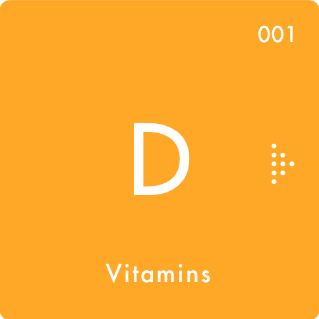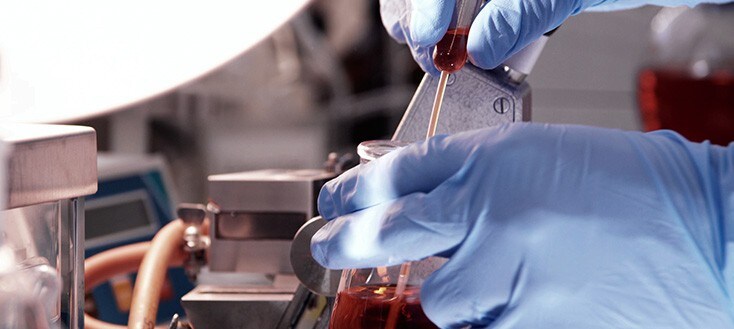
Health functions
Vitamin D (calciferol) contributes to the normal development and maintenance of bones and teeth, muscle function, and the immune system. Read More

Vitamin D is a fat-soluble vitamin that is essential for maintaining the mineral balance in the body. Its best studied and major form in humans, vitamin D3 (‘cholecalciferol’), can be synthesized in the skin upon exposure to ultraviolet-B (UVB) radiation from sunlight (1). When exposure to UVB radiation is insufficient, adequate intake of vitamin D from the diet is essential for health.
Plants can synthesize ergosterol, which is converted by ultraviolet-light to vitamin D2 (ergocalciferol), this form of vitamin D is approximately 30% less active in the human body when compared to vitamin D3 (2).
After vitamin D is consumed through the diet (D3 and D2) or synthesized in the skin (D3), both biologically inactive forms (D3 and D2) enter the circulation and are transported to the liver, where they get hydroxylated to form the 25-hydroxyvitamin D [25(OH)D] pool, which is the vitamin D status indicator.
Increased exposure to sunlight or increased dietary intake of vitamin D increases blood levels of 25(OH)D, making the blood 25(OH)D concentration a useful indicator of vitamin D nutritional status.
In the kidney, 25(OH)D is converted to 1alpha,25-dihydroxyvitamin D [1,25(OH)2D], the most potent form of vitamin D. Most of the physiological effects of vitamin D in the body are related to the activity of 1,25(OH)2D (3). Its effects are mediated through the vitamin D receptor (VDR) (4). More than 200 genes in tissues throughout the body are known to be regulated by 1,25(OH)2D (5).
Authored by Dr Peter Engel in 2010, reviewed and updated by Dr Igor Bendik-Falconnier on 18.06.2017

Vitamin D (calciferol) contributes to the normal development and maintenance of bones and teeth, muscle function, and the immune system. Read More

Without sufficient vitamin D from sun exposure or dietary intake, calcium absorption in the digestive tract cannot be maximized. Read More
Things to know about Vitamin D
The recommended dietary allowance (RDA) of vitamin D (calciferol) is dependent on age, gender, and other factors.. Read More
Surveys in several European countries, such as Germany (95), Austria (66), Ireland (67), The Netherlands (68) and the U.K. (69), indicate that a substantial part of the population has a vitamin D intake below the recommended levels. Read More
Vitamin D (calciferol) deficiency can lead to rickets and soft bones. Symptoms include muscle weakness and bone pain. Read More